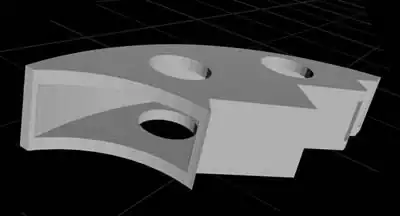I need to print a flexible, hollow "sleeve" or "cover" for an elongated part, kind of like a soft "skin" for a "finger" (see pic). I'm not sure how to approach the hollow space problem, i.e. how to print a flexible surface that is above an enclosed, hollow space. I could print supports inside, but they'd be hard to remove from inside the space, because I can't quite access all corners with a tool from outside. I could print this in 2 parts ("bottom" / "walls" + "ceiling" separately), but I'd prefer not to glue if I don't have to. Any ideas how to approach this?
Asked
Active
Viewed 171 times
2
-
1Welcome to 3dPrinting.SE! – Pᴀᴜʟsᴛᴇʀ2 Jan 24 '19 at 00:47
1 Answers
6
Print orientation is usually the key to print with a minimum of supports. If you print this part with the sharp point down, you will get some support structures on the outside for overhang support to prevent it from tipping over, but no support on the inside.
0scar
- 32,029
- 10
- 59
- 135
-
I wonder whether it's possible to print **flexible** items with this much complexity without some internal support. My guess is that the allowable overhang angle is much less than for rigid materials. – Carl Witthoft Jan 24 '19 at 16:15
-
1I think it's dependent on the softness of the filament. I saw a video where the guy printed a glove (with TPU I think) and it seemed to print alright without supports. I doubt something like ninjaflex would be as simple. – Lux Claridge Jan 24 '19 at 17:19
-
@CarlWitthoft Fortunately, the overhang angle for support generation is a parameter in the slicer settings. – 0scar Jan 24 '19 at 19:48
